Sausages can be cooked in a number of different ways depending on their variety.
But do you need to remove sausage casing before cooking or is it better to leave it on?
To answer this question, we’ll have to take a look at the role of sausage casings in cooking as well as the materials they’re made of.
In some cases, the sausage skins are made of synthetic materials that are inedible so they need to be removed.
In this guide, I’m going to help you determine if you need to remove sausage casing from Bratwurst, Italian sausage, and other types of sausages.
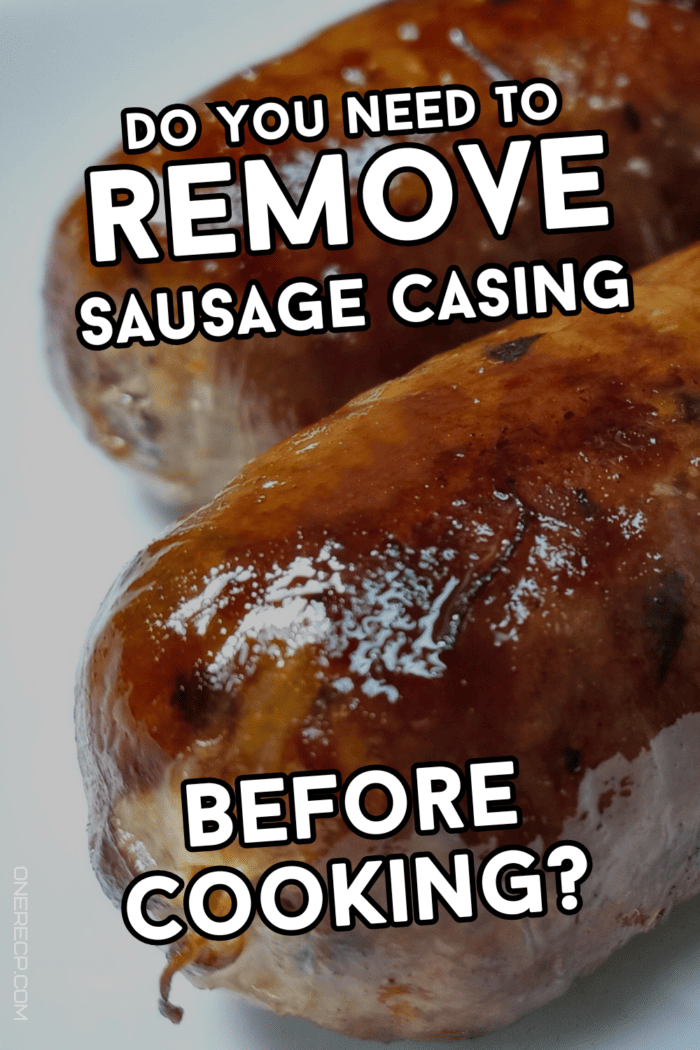
Do you need to remove sausage casing before cooking?
The term sausage encompasses a broad variety of ground or chopped meats that are stuffed into a casing.
The role of the casing is to preserve the shape of the meat and hold all of the ingredients together.
Usually, the material of the casing is determined by the way the sausages are processed.
Smoked sausages, for instance, are typically made with natural casings since they have a permeable membrane that allows smoke to pass through.
Many types of salami, on the other hand, are made with collagen casings since they’re much easier to produce.
So what should you do?
You don’t need to remove sausage casing before cooking.
Raw sausages are made with casings from organic materials which are completely safe.
Moreover, these casings prevent the meat from drying out by keeping all of the fats inside the sausage.
The skin also gives grilled sausages a deeper flavor, which is why I personally prefer leaving it on.
Having said that, you can take off the casing and use the sausage meat instead of ground beef or pork.
In fact, this is my preferred way for making spaghetti sauce.
You can check my recipe for spaghetti sauce with Italian sausage here.
Can you eat all sausage casings?
Sausage casings can be classified into four different types depending on the material they’re made of.
Some of them are completely edible, while others need to be peeled off first.
Let’s look at each different type in detail so we can find which are the ones that are safe to eat.
Natural casings
Organic sausage casings are typically made of hog, sheep, or beef intestine, that gets scraped and cleaned with water and salt.
They’re completely safe to eat and are mostly used for raw pork, chicken, and beef sausages.
Since the intestine has a permeable membrane these types of casings are also used for smoked sausages and salamis. The natural casing’s structure is similar to that of the membrane you remove when cooking ribs.
You can recognize natural casings by their sheen and their rounded ends which are used to link other sausages.
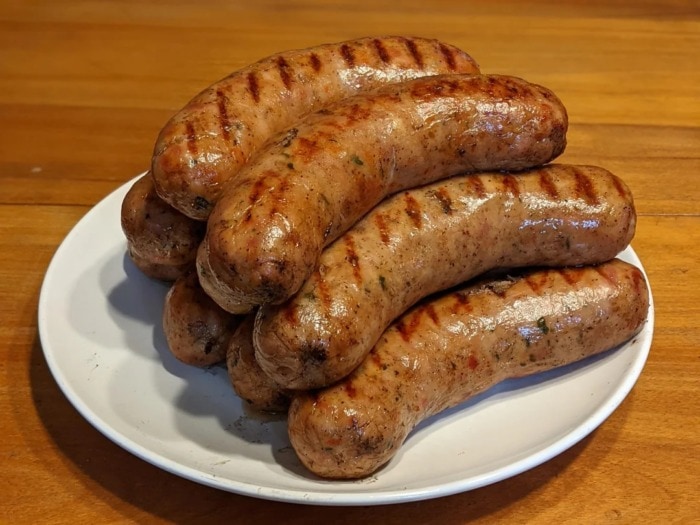
by Bokonon45
Another way to tell them apart is by the irregularities and imperfections in their texture, which are not typical for artificial casings.
Related read: What are the white spots on sausage casings?
Collagen casings
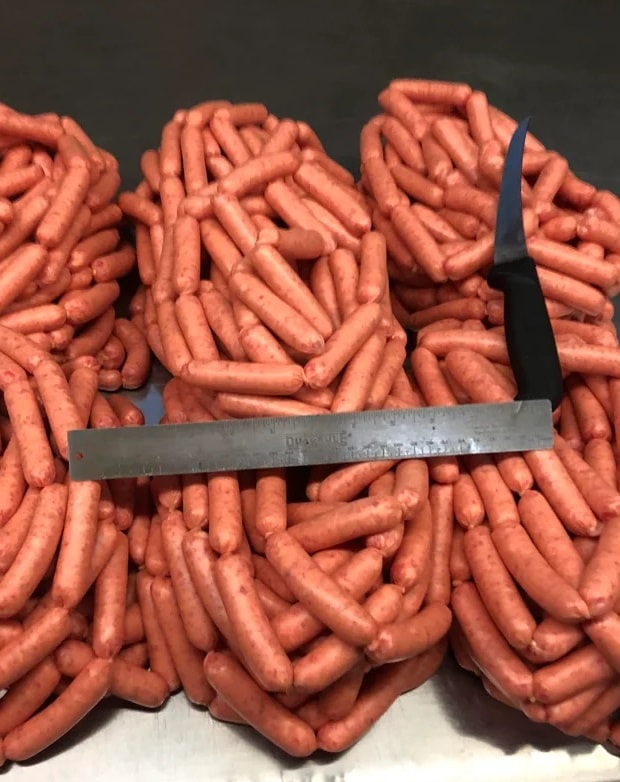
by DivineAnimosity
Collagen casings are an artificial type of sausage skin that’s becoming increasingly popular due to its lower production cost.
They have been used for both low and high caliber sausages for more than 50 years.
This type of casing is made from collagen that gets extracted from pig hides, bones, and tendons.
In some rare cases, the collagen can also be derived from poultry or fish.
Even though they’re artificial, most collagen casings are edible.
However, some salamis, beef sticks, and large caliber sausages have a thicker collagen casing that needs to be removed before consumption.
Cellulose casings
Cellulose sausage casings are made from viscose that’s derived from cotton linters or wood pulp during processing.
Cellulose casings are inedible so they must be peeled off from the sausage before eating.
These types of casings can sometimes be identified by a black line that runs down the sausage.
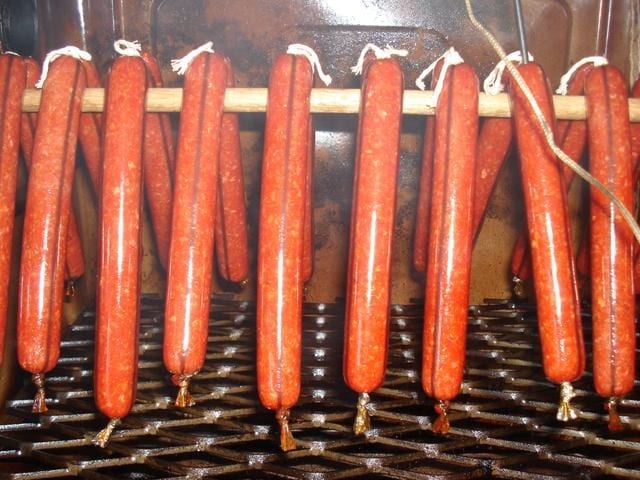
by fagesbp
However, the black line may not always be there.
Some cellulose casings may be impossible to distinguish from the collagen ones for the untrained eye.
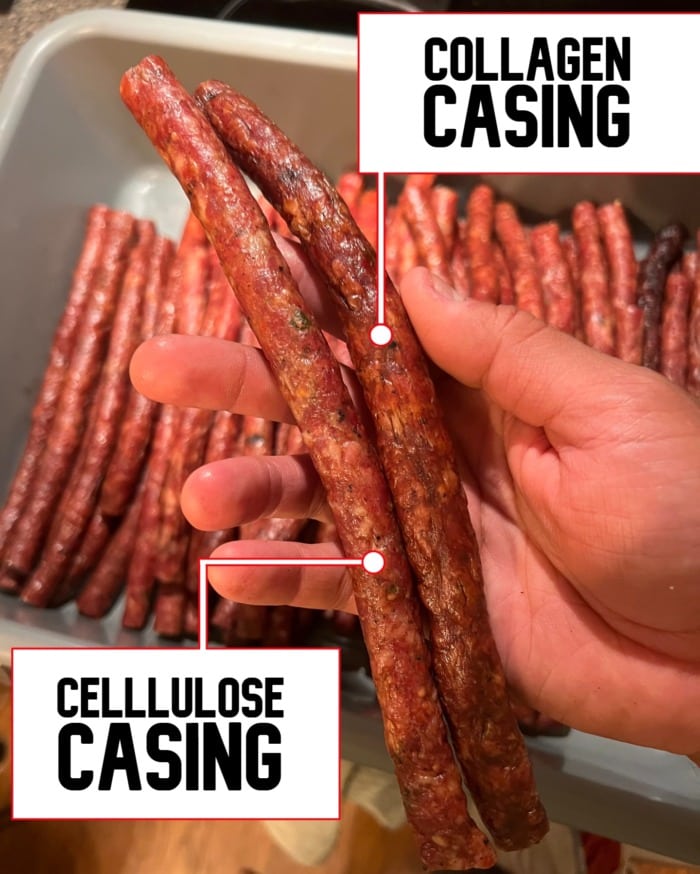
by Hemileia_foxtrot
One good way to check if a sausage has cellulose casing is to start peeling it off.
If it comes off in what resembles cottony fibers then you’re dealing with a cellulose casing.
Some cellulose casings contain plastic, which resemble plastic wrappers when peeled.
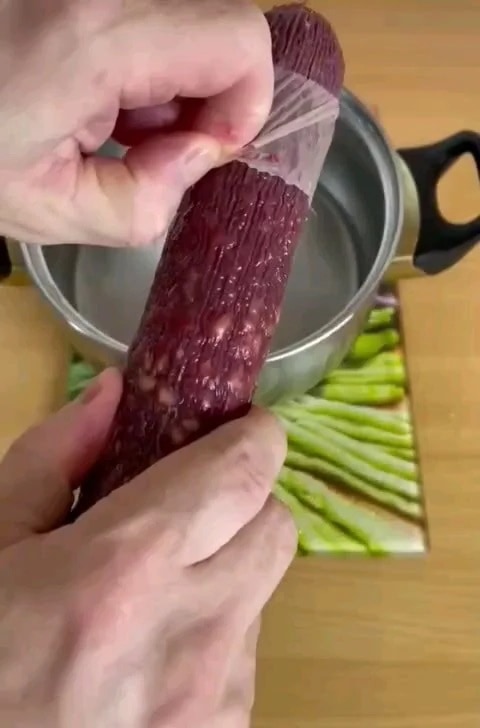
by Quietation
Cellulose casings are mostly used for wieners and frankfurters.
In some cases, they’re also used for bologna, smoked ham, or other breakfast sausages.
Plastic casings
Plastic sausage casings are mostly made from polyamide that doesn’t allow smoke or water to pass through.
This is why they’re used for non-smoked meats with high yield such as luncheon meats and bologna sausages.
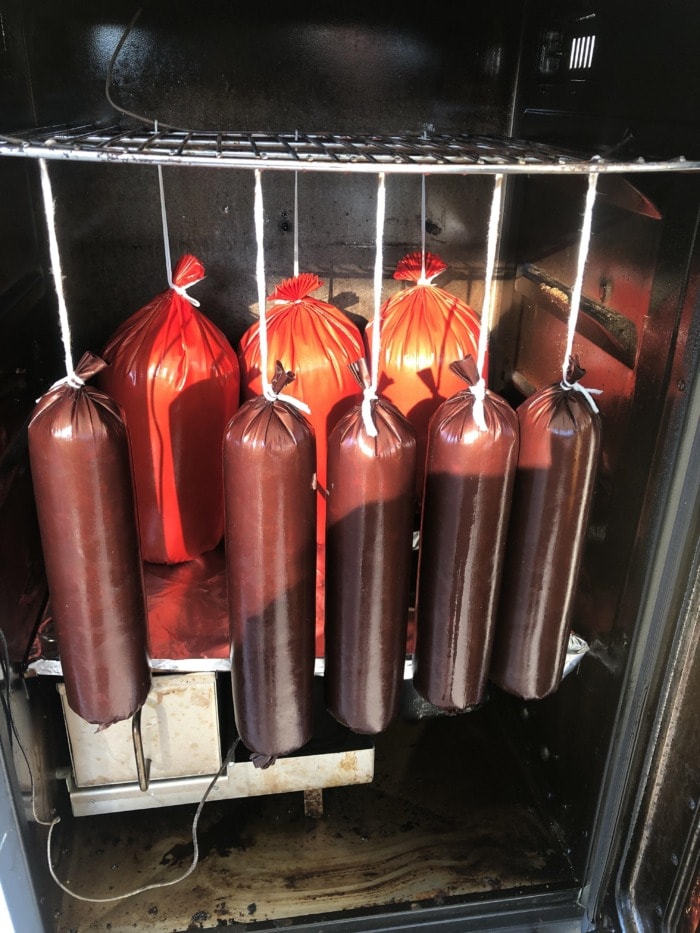
by Spacegoat00
The inner surface of the casing can also be laminated with a polymer, that causes the meat to stick and leads to meat loss.
Plastic sausage casings are inedible and need to be removed before the sausages are eaten.
How to remove sausage casings from raw sausage?
Even though you can cook raw sausages with their casing, you might still want to remove it on some occasions. You can do this in two ways.
Freezing
One of the ways to remove sausage casings from raw sausages is by freezing them.
To do this, you’ll need to follow a few simple steps.
- Place the sausages on a baking sheet and freeze them for 20 minutes. This will prevent the filling from sticking to the skin.
- Cut the sausage from end to end just enough to pierce the casing.
- Flip the sausage over and slip the casing off.
Parboiling
If you don’t like handling raw meat, you can parboil your sausage to remove its casing.
Here’s how this works:
- Put the sausages in boiling water for 2 – 3 minutes. The skins will turn gray or light brown when they’re done.
- Transfer the sausages in a bowl with cold water to stop the meat from cooking.
- Dry the sausages using a paper towel.
- Make a shallow lengthwise cut and peel off the casing.
My closing thoughts
To determine whether you should remove sausage casing or not, you first need to find out the material of the casing.
Raw sausages are made with natural casings that are completely edible and improve the flavor of the meat, so you don’t need to remove them.
Some breakfast sausages and luncheon meat, however, are wrapped in plastic or cellulose skins that need to be peeled off.
If you have any questions or thoughts, feel free to post them down in the comments.